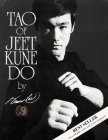More on this book
Community
Kindle Notes & Highlights
The point is the doing of them rather than the accomplishments. There is no actor but the action; there is no experiencer but the experience.
The perfect way is only difficult for those who pick and choose. Do not like, do not dislike; all will then be clear. Make a hairbreadth difference and heaven and earth are set apart; if you want the truth to stand clear before you, never be for or against. The struggle between “for” and “against” is the mind’s worst disease.
Empty your cup so that it may be filled; become devoid to gain totality.
The man who is clear and simple does not choose. What is, is.
Relationship is understanding. It is a process of self-revelation. Relationship is the mirror in which you discover yourself — to be is to be related.
Knowledge is fixed in time, whereas, knowing is continual. Knowledge comes from a source, from an accumulation, from a conclusion, while knowing is a movement.
If you meet the unconventional attack, such as one delivered with broken rhythm, with your chosen patterns of rhythmical classical blocks, your defense and counterattack will always be lacking pliability and aliveness.
Understanding requires not just a moment of perception, but a continuous awareness, a continuous state of inquiry without conclusion.
I hope martial artists are more interested in the root of martial arts and not the different decorative branches, flowers or leaves. It is futile to argue as to which single leaf, which design of branches or which attractive flower you like; when you understand the root, you understand all its blossoming.
The outstanding characteristic of the expert athlete is his ease of movement, even during maximal effort. The novice is characterized by his tenseness, wasted motion and excess effort. That rare person, the “natural athlete,” seems to be endowed with the ability to undertake any sport activity, whether he is experienced in it or not, with ease. The ease is his ability to perform with minimal antagonistic tension. It is more present in some athletes than in others, but can be improved by all.
Allow the “wanting” to score the target. Back yourself by alertness, awareness to sudden change to defense or counter. Keep a neutral watchfulness at all times, always observing the opponent’s actions and reactions to fit in. Learn to relay destructiveness (looseness, speed, compactness, ease) to moving targets.
Experience shows that an athlete who forces himself to the limit can keep going as long as necessary. This means that ordinary effort will not tap or release the tremendous store of reserve power latent in the human body. Extraordinary effort, highly emotionalized conditions or a true determination to win at all costs will release this extra energy. Therefore, an athlete is actually as tired as he feels and, if he is determined to win, he can keep on almost indefinitely to achieve his objective. The attitude, “You can win if you want to badly enough,” means that the will to win is constant. No
...more
Intelligence is sometimes defined as the capacity of the individual to adjust himself successfully to his environment—or to adjust the environment to his needs.
The intelligent fighter will never hesitate to change tactics in order to use the correct strokes to deal with his opponent. It must be plain by now that the fighter’s decision to use any particular stroke must be influenced by his opponent’s technique and method of fighting.
To attack, you must study the adversary’s weaknesses and strengths and take advantage of the former while avoiding the latter.
The form of an attack is generally dictated by the form of defense used by the opponent. In other words, between opponents of approximately the same caliber, an attack can rarely be successful unless it deceives or outwits the defense.
Nothing bothers an adversary more than variety in both attack and defense,
Examine the natural follow-ups for blows that miss or fall short and study their defensive accompaniments. Explore the types of opponent reactions to a miss.
With two evenly-matched competitors, the advantage lies with the man who counters because when a man leads, he cannot help but expose more than the one who remains on-guard. Any commitment automatically opens an invitation or target area.
Knowing that opponents are constantly trying to note one’s habits and weaknesses, it is obvious that a conscious effort must be made to give variety to one’s game (including the use of feigning certain habits and weaknesses).
It’s usually best, whenever possible, to draw your opponent into leading before hitting out on your own account. By forcing your opponent to commit himself to a decided step, you can be moderately certain of what he is about to do.


